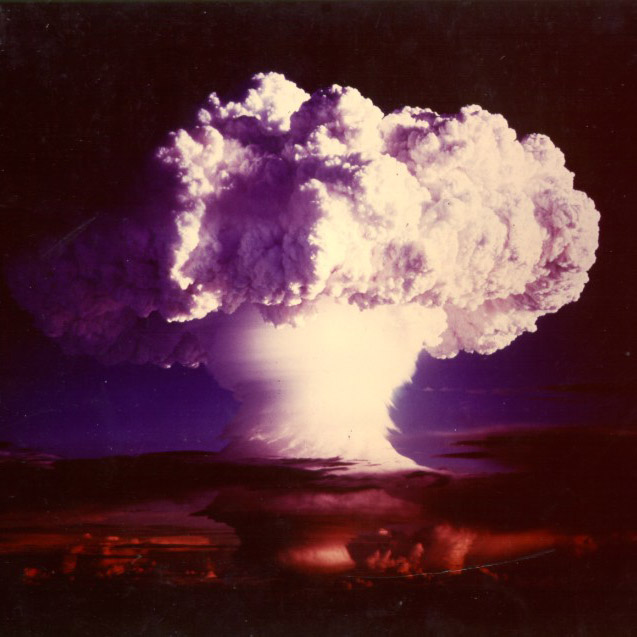Einsteini
99
Es
Grup
n/a
Període
7
Bloc
f
Protons
Electrons
Neutrons
99
99
153
Propietats Generals
Nombre atòmic
99
Massa atòmica
[252]
Nombre de massa
252
Categoria
Actínids
Color
n/a
Radioactiu
Sí
Named after Albert Einstein
Estructura cristal·lina
n/a
Història
Einsteinium was discovered as a component of the debris of the first hydrogen bomb explosion in 1952.
It was identified by Albert Ghiorso and co-workers at the University of California, Berkeley in collaboration with the Argonne and Los Alamos National Laboratories, in the fallout from the Ivy Mike nuclear test.
The new element was produced by the nuclear explosion in miniscule amounts by the addition of 15 neutrons to uranium-238.
It was identified by Albert Ghiorso and co-workers at the University of California, Berkeley in collaboration with the Argonne and Los Alamos National Laboratories, in the fallout from the Ivy Mike nuclear test.
The new element was produced by the nuclear explosion in miniscule amounts by the addition of 15 neutrons to uranium-238.
Electrons per capa
2, 8, 18, 32, 29, 8, 2
Configuració electrònica
[Rn] 5f11 7s2
Einsteinium is the first divalent metal in the actinide series
Propietats Físiques
Fase
Sòlid
Densitat
8,84 g/cm3
Punt de fusió
1133,15 K | 860 °C | 1580 °F
Punt d'ebullició
-
Entalpia de fusió
n/a kJ/mol
Entalpia de vaporització
n/a kJ/mol
Capacitat tèrmica específica
- J/g·K
Abundància a l'escorça terrestre
n/a
Abundància a l'univers
n/a

Crèdits de les imatges: Wikimedia Commons (National Nuclear Security Administration)
Einsteinium was first observed in the fallout from the Ivy Mike nuclear test
Número CAS
7429-92-7
Número CID de PubChem
n/a
Propietats Atòmiques
Radi atòmic
-
Radi covalent
-
Electronegativitat
1,3 (Escala de Pauling)
Potencial d'ionització
6,42 eV
Volum atòmic
28,5 cm3/mol
Conductivitat tèrmica
0,1 W/cm·K
Estats d'oxidació
2, 3
Aplicacions
Einsteinium is mainly used for scientific research purposes.
The rare isotope einsteinium-254 is favored for production of ultraheavy elements.
Einsteinium-254 was used as the calibration marker in the chemical analysis spectrometer of the Surveyor 5 lunar probe.
The rare isotope einsteinium-254 is favored for production of ultraheavy elements.
Einsteinium-254 was used as the calibration marker in the chemical analysis spectrometer of the Surveyor 5 lunar probe.
Einsteinium is harmful due to its radioactivity
Isòtops
Isòtops estables
-Isòtops inestables
240Es, 241Es, 242Es, 243Es, 244Es, 245Es, 246Es, 247Es, 248Es, 249Es, 250Es, 251Es, 252Es, 253Es, 254Es, 255Es, 256Es, 257Es, 258Es